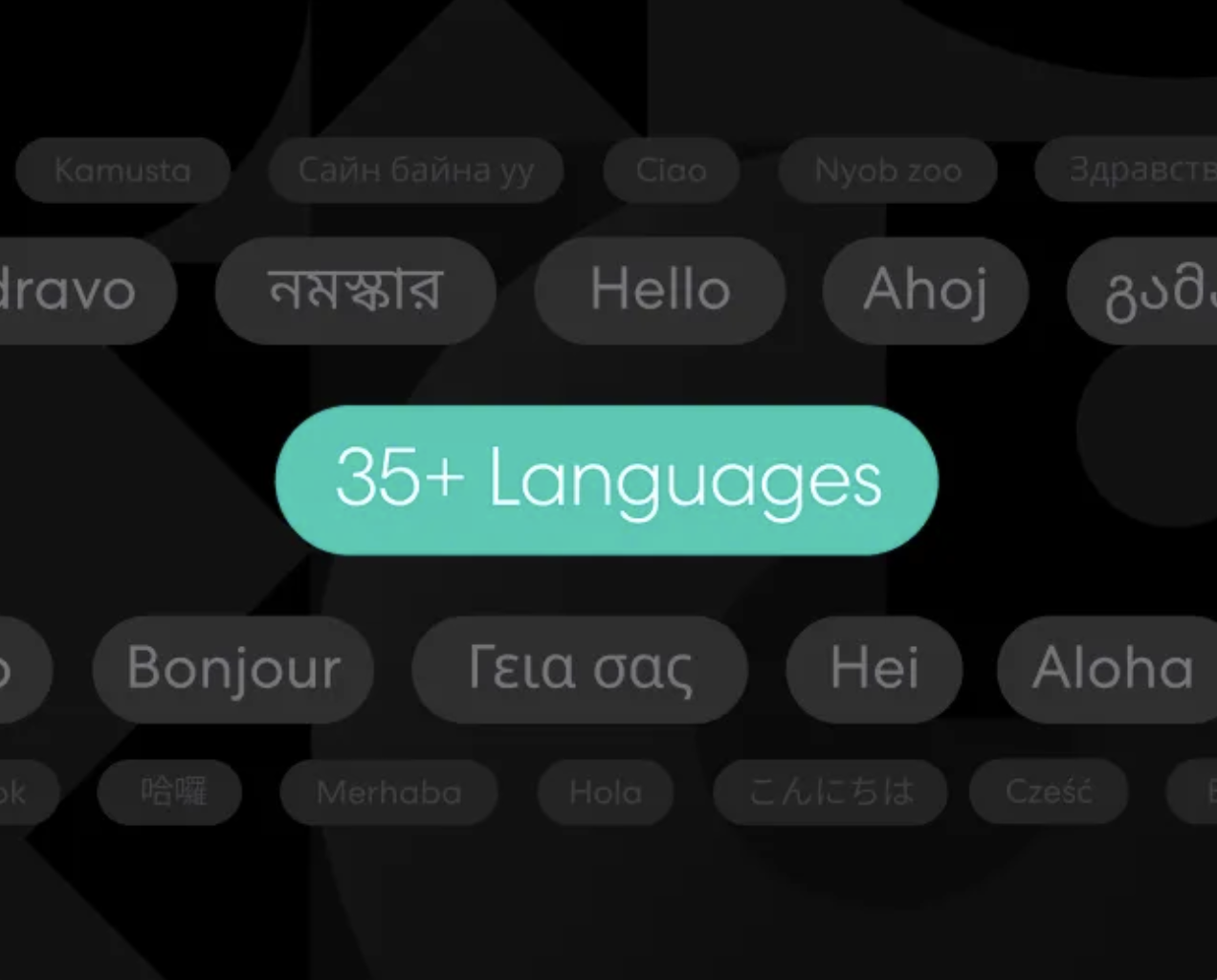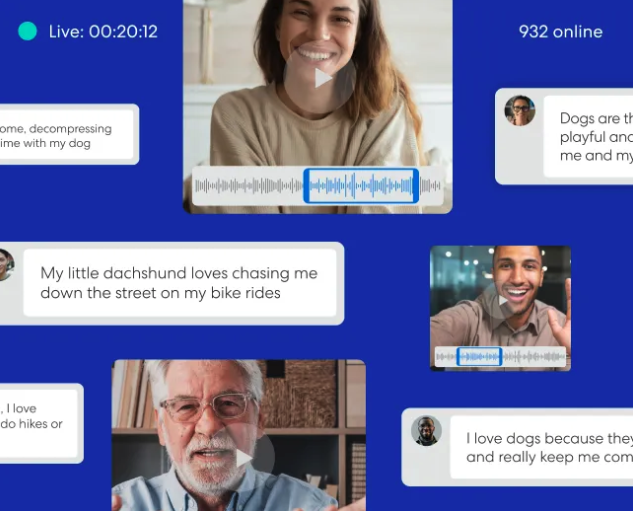
Research 101
Introducing: Poll Comparison - Streamline Concept Testing and Make Better Decisions Faster
Emmet Hennessy
November 24, 2025
Market Research
Articles

Research 101
Introducing: Poll Comparison - Streamline Concept Testing and Make Better Decisions Faster
Emmet Hennessy
November 24, 2025
Market Research
Articles

AI
Purpose-Built for Research AI is Here - a Letter from the CPO
Jessica Dubin
October 21, 2025
Market Research
Articles

AI
Purpose-Built for Research AI is Here - a Letter from the CPO
Jessica Dubin
October 21, 2025
Market Research
Articles

Advanced Research
Unlock Agile Global Insights: Using Remesh Multi-Language Conversations for Research Across Audiences
Customer Success Team
October 14, 2025
Market Research
Articles

Advanced Research
Unlock Agile Global Insights: Using Remesh Multi-Language Conversations for Research Across Audiences
Customer Success Team
October 14, 2025
Market Research
Articles

AI
The Prompt Is the New Moderator Guide
Anthony Lam
September 16, 2025
Market Research
Articles

AI
The Prompt Is the New Moderator Guide
Anthony Lam
September 16, 2025
Market Research
Articles

AI
Building an AI-Ready Research Stack: Beyond Data Preparation
Anthony Lam
September 9, 2025
Market Research
Articles

AI
Building an AI-Ready Research Stack: Beyond Data Preparation
Anthony Lam
September 9, 2025
Market Research
Articles

AI
Agentic AI for Research: A Practical Primer
Dan Reich
September 2, 2025
Market Research
Articles

AI
Agentic AI for Research: A Practical Primer
Dan Reich
September 2, 2025
Market Research
Articles

Advanced Research
Webinar Recap: Unlocking Depth at Scale - Remesh Video for Researchers
Customer Success Team
August 5, 2025
Market Research
Webinars

Advanced Research
Webinar Recap: Unlocking Depth at Scale - Remesh Video for Researchers
Customer Success Team
August 5, 2025
Market Research
Webinars

Transparency in AI: How Remesh Builds Trust Through Responsible Implementation
Ross Coudeyras
July 21, 2025
Articles

Transparency in AI: How Remesh Builds Trust Through Responsible Implementation
Ross Coudeyras
July 21, 2025
Articles

Advanced Research
Webinar Recap: Turning Employee Engagement Insights into Action with Remesh
Customer Success Team
June 16, 2025
Employee Research
Articles

Advanced Research
Webinar Recap: Turning Employee Engagement Insights into Action with Remesh
Customer Success Team
June 16, 2025
Employee Research
Articles
Driving Organizational Change Using Diverse Communication
In her webinar, Caitlin Harper shares about how diverse communication strategies can drive effective change management. Here's what she talked about.



In February, former VP of Culture and Communications at Insider Inc. Caitlin Harper presented a Remesh webinar on strategies for managing organizational change and hurdles in D&I programs for the modern workplace. The full recording of that webinar can be found here!
Here is an extract of the transcript from that webinar.
Let’s talk about driving organizational culture using diverse communication strategies. I'm going to use the word diverse in two ways. You have diversification of communication strategy, as in literally using different types of communication, and diversity as in diversity inclusion programs or efforts, which involves ensuring your organization is more diverse and inclusive.

An Introduction to Diversity & Inclusion
So in the workplace, diversity is when you have employees from different backgrounds and with different identities like gender, race, sexual orientation, ethnicity, socioeconomic status, etc. Inclusion is when those different types of people feel like they have a seat at the table and their voices are being heard and considered in the organization. People use this quote from Verna Meyers a lot: “Diversity is being asked to the party, and inclusion is being asked to dance.” Remember that being inclusive in your communication makes it more effective.
So often, organizations focus on diversity and fall way short on the inclusion factor. They hire interns, executive assistants, and entry-level people, and throw them into an environment that isn't inclusive, then don't provide an opportunity for growth. Those employees leave, and then the organization says, “I guess they couldn't make it here” or “they weren't a culture fit.” But that's not the issue. The issue is that the environment was not inclusive, and in reality, there wasn’t an ineffective communication strategy.

Diversity is Good for Business
Besides being the right thing to do, we know diversity is good for business. McKinsey found that companies in the top quartile for gender diversity on their executive teams were 29% more likely to experience above average profitability than those in the fourth quartile, and 33% more likely when it came to ethnic and cultural diversity. Clover Park found that teams outperform individual decision-makers 66% of the time, and decision making improves as team diversity increases.
Teams that include a wide range of ages and different geographical locations make better business decisions 87% of the time. Glassdoor found that 67% of job seekers find a diverse workplace important when considering job offers, so it's also good for recruitment. And Harvard Business School found that 91% of companies with a more diverse workplace reported higher customer satisfaction. So diversity is not just good for employees – it's good for the customer side as well. For me, communication strategy, diversification and D&I are related because if you diversify your communication strategy, you are moving toward creating a more inclusive environment, since all different types of people are going to have the information they need to do their jobs. So let's focus on how you can have a positive change outcome by using an effective and inclusive communication strategy.

An Intro to Organizational Change Management
Organizational change or change management describes the processes and desired outcomes of changing an organization's methods, procedures, culture, technology, or anything. You can adapt to an emerging market, introduce new software systems, merge with another company, or even swap out your printers for new printers. Those are all changes. It doesn't matter how big the change is – the scale can vary, but the concepts of how we communicate them are the same.
Unfortunately, 70% of organizational change initiatives fail. This happens most often when you don't get buy-in from middle managers or you don't get your employees on board. If the people don't change, the organization doesn't change. And many studies have revealed that the number one reason change efforts fail is because of poor communication to these groups. So, either communication isn't clear and isn't consistent, it's not authentic, or it's not frequent enough.
We want change management to be successful, and we do that by fostering an inclusive workplace and creating effective communication strategies. When change management fails, it's not because of the technical side of things, but the human side - we assign people to manage a project workflow or the budget, and oftentimes, our people and how we're going to communicate with them are an afterthought. The human aspect, and therefore the communication aspect, are completely intertwined. If your communication fails, your people fail, and therefore the change fails.

Leading Through Change
I encourage leaders, before they start to even make the change in their company, to consider who is making the decision in their organization, why they're the ones making the decisions, how people are going to react to the knowledge of who's making those decisions, and how you're going to address those issues when they come up.
To watch the full webinar, click here

Other Webinar Highlights
Effective change management communication
Action Items (Technical)
Some technical points to consider when planning change management communication include:
- What time is best for your audience
- Whether you are using the appropriate distribution and contact lists.
- How often the communication has to be repeated.
- What channels or methods you're going to use.
- Whether you have all the necessary information, especially when communicating major changes
Effective change management communication
Action Items (Creative)
To ensure that your efforts to communicate upcoming organizational change are effective, consider the following tips:
- Think about your recipient, not yourself
- Use inclusive language
- Provide tools and messaging to other leaders and culture champions
- Be an authentic change agent yourself
- Be vulnerable and transparent
- Accept feedback with humility
- Continue to communicate and champion the change
Want to watch the whole webinar on driving organizational change? Listen now!
{{cta('c5467a67-cd06-4218-ab0d-092a92eb41da','justifycenter')}}
-
Lorem ipsum dolor sit amet, consectetur adipiscing elit. Suspendisse varius enim in eros elementum tristique. Duis cursus, mi quis viverra ornare, eros dolor interdum nulla, ut commodo diam libero vitae erat. Aenean faucibus nibh et justo cursus id rutrum lorem imperdiet. Nunc ut sem vitae risus tristique posuere.
-
Lorem ipsum dolor sit amet, consectetur adipiscing elit. Suspendisse varius enim in eros elementum tristique. Duis cursus, mi quis viverra ornare, eros dolor interdum nulla, ut commodo diam libero vitae erat. Aenean faucibus nibh et justo cursus id rutrum lorem imperdiet. Nunc ut sem vitae risus tristique posuere.
-
More

Introducing: Poll Comparison - Streamline Concept Testing and Make Better Decisions Faster

.png)

.png)
Read More

.png)
.png)
.png)

.png)

.png)
Learn More

.png)
.png)
.png)


Unlock Agile Global Insights: Using Remesh Multi-Language Conversations for Research Across Audiences

.png)

.png)
Read More

.png)
.png)
.png)

.png)

.png)
Learn More

.png)
.png)
.png)
Stay up-to date.
Stay ahead of the curve. Get it all. Or get what suits you. Our 101 material is great if you’re used to working with an agency. Are you a seasoned pro? Sign up to receive just our advanced materials.




